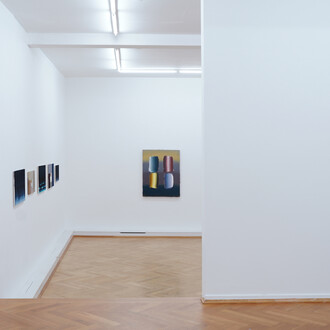To romanticise the world is to make us aware of the magic, mystery and wonder of the world.
(Novalis, Aphorisms, 1798)
May you only take the trouble to practise poetry.
(André Breton, First manifesto of surrealism, 1924)
One hundred years ago, the most renowned artistic movement of the twentieth century emerged in Paris: Surrealism. Sparked by a reconsideration of value systems in the aftermath of the First World War, it was a current that would shape the twentieth century like no other. Surrealism displayed a striking »elective affinity« in particular with German Romanticism. The supernatural and irrational, dreams and chance, a feeling of community and encounters with a changing natural world were vital sources of inspiration for German Romanticism and shaped international Surrealism differently a century later. Starting with André Breton’s First Surrealist Manifesto in 1924, fascinating parallels come to light with respect to fundamental questions, attitudes, motifs and even pictorial processes.
Selected Surrealist masterpieces by Max Ernst, Meret Oppenheim, René Magritte, Salvador Dalí, Valentine Hugo, Toyen, André Masson, Paul Klee and many more demonstrate that, alongside poets including Novalis, Achim and Bettina von Arnim, Friedrich Hölderlin, Heinrich von Kleist and Karoline von Günderrode, the great Romantic painters such as Caspar David Friedrich (1774–1840) and Philipp Otto Runge (1777–1810) also played an important role in the search for a revolutionary new art form in the twentieth century.
Surprisingly, even more direct references to German Romanticism emerged in the Resistance and among those surrealists living under occupation and in exile during the Second World War. In a broader sense, comparable basic ideas about the cosmos, nature, dreams, inner visions and community can be discerned in the activities of the Surrealists between 1924 and 1966.
To mark the 100th anniversary of the advent of Surrealism, the epoch-spanning exhibition invites visitors to compare and contrast the diverse artistic, poetic, and intellectual facets of Surrealist art with the heritage of German Romanticism. The show brings together over 180 icons of Surrealism and over 60 core works of German Romanticism, presenting them alongside one another. In keeping with the multidisciplinary approach taken by both movements, the exhibits on display encompass paintings, drawings, sculptures, literature, films, photography and objects.
Strikingly enough, the juxtaposition of Surrealism and German Romanticism is at the very heart of the Hamburg collection: After his first visit to the Kunsthalle, to accept the Lichtwark Prize in 1964, Max Ernst responded directly to Runge’s key work of German Romanticism, Morning (first version) (1808) with his 1965 painting A Beautiful Morning (Un beau matin).
This project deals with this special focus within the European centenary celebrations of Surrealism and is the first collaboration between the Hamburger Kunsthalle and the Centre Pompidou in Paris.
On view will be outstanding masterworks on loan, some of them never before seen, from national and international private collections as well as important museums in Mexico, the USA and throughout Europe, including the Philadelphia Museum of Art; Sidney and Lois Eskenazi Museum of Art, Bloomington (USA); Museo Nacional Centro de Arte Reina Sofía, Madrid; Tate, London; Musée Cantini, Marseille; Musée d’Art Moderne de la Ville de Paris; Kunsthalle Praha; Kunstmuseum Bern; Kunstmuseum Liechtenstein, Vaduz; Städel Museum, Frankfurt; Museum Ludwig, Cologne; Pinakothek der Moderne, Munich; and many more, as well as from many European private collections, some of them hitherto unknown to the public.
















